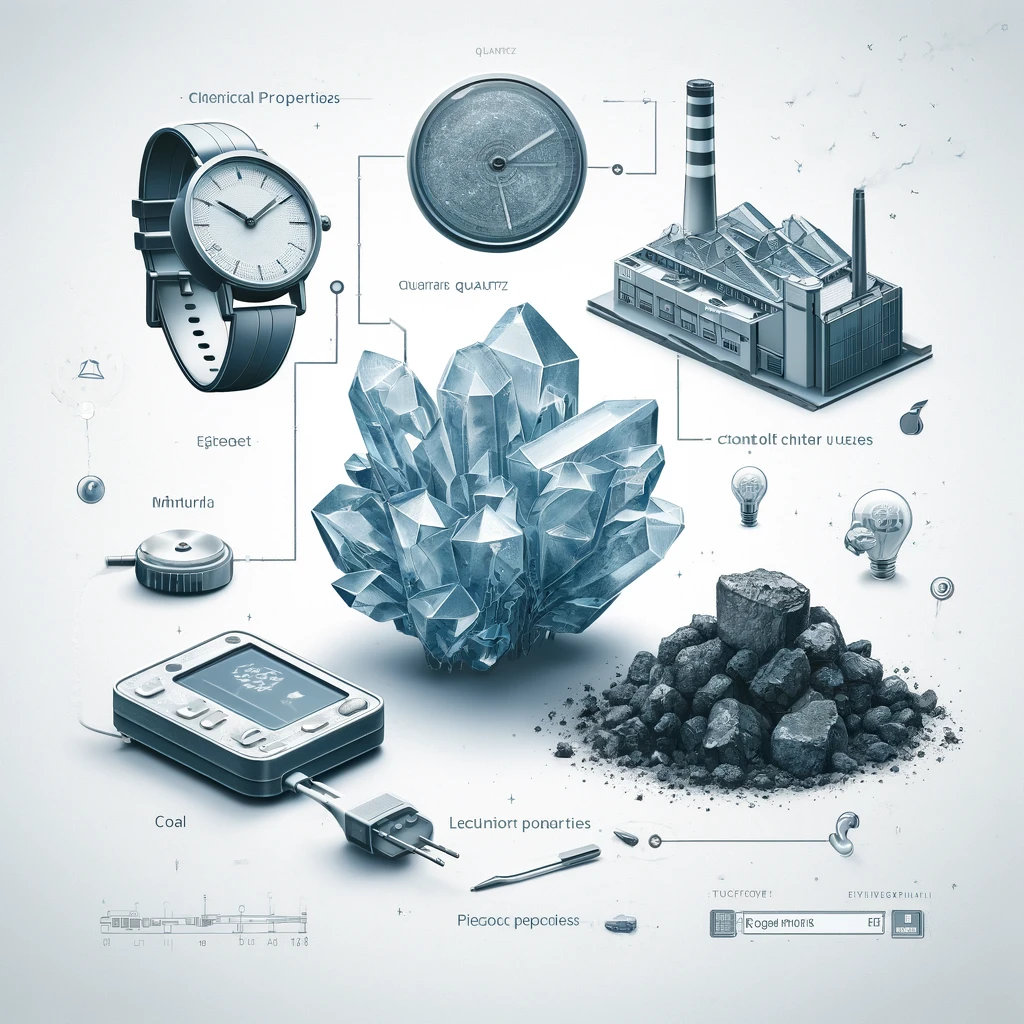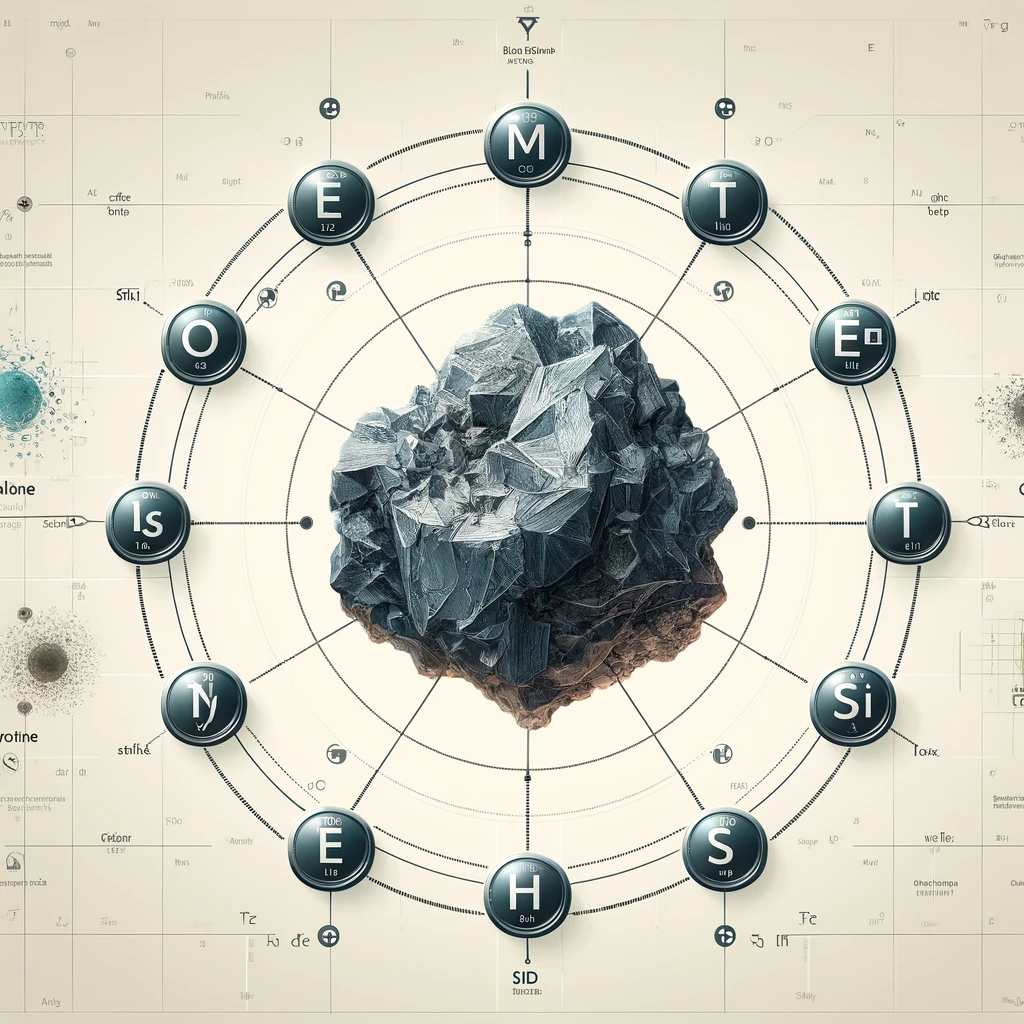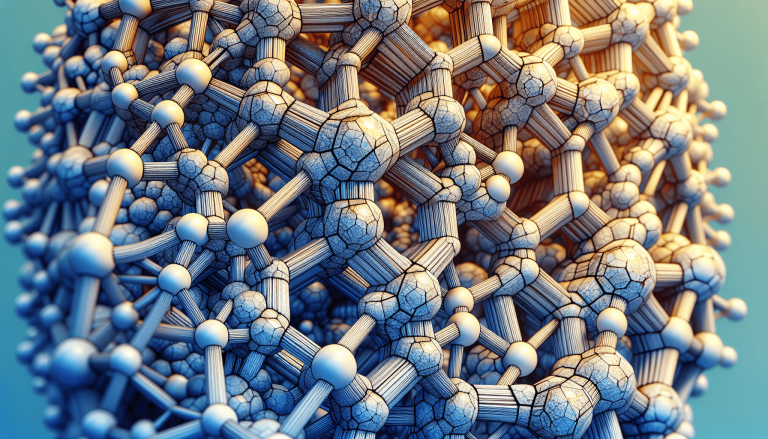How Do Mineral Chemical Properties Affect Their Uses?
So, we often hear about how minerals are used in various industries, from construction to electronics. But have you ever wondered how the chemical properties of minerals actually impact their uses? It turns out that the chemical composition of a mineral can determine its strength, its ability to conduct electricity, and even its color. In this article, we’ll explore the fascinating world of mineral chemical properties and how they play a crucial role in shaping the way we utilize these natural resources. Buckle up, because we’re about to embark on a mineral-filled journey!
Elemental Composition
The elemental composition of a mineral refers to the types and proportions of chemical elements present in the mineral. Minerals are composed of various combinations of elements, and their chemical composition is an essential factor in determining their physical properties and potential uses. For example, minerals that are primarily composed of carbon, hydrogen, and oxygen are classified as organic minerals, while those composed of pure elements, such as gold or silver, are called native elements.
Chemical Formula
The chemical formula of a mineral provides valuable information about its composition. It represents the types and ratios of elements present in the mineral. Chemical formulas are composed of chemical symbols for elements and numerical subscripts to indicate the number of atoms of each element. For instance, quartz, which is commonly found in sand, has a chemical formula of SiO2, indicating that it consists of one silicon atom and two oxygen atoms.
Impurities
Impurities are naturally occurring substances that are present in a mineral alongside its primary chemical constituents. These impurities can significantly impact the properties and uses of a mineral. For example, impurities in gemstones add color and contribute to their unique aesthetic appeal. Additionally, impurities can affect the hardness, durability, and overall quality of a mineral, making it more suitable for specific applications. Impurities may also alter the mineral’s chemical reactivity and its response to external stimuli.
Physical Structure
Crystal Structure
The crystal structure of a mineral refers to the arrangement of atoms or ions in a repeating pattern. It plays a crucial role in determining the physical properties of a mineral, such as its hardness, cleavage, and optical properties. Crystals can exhibit various types of structures, including cubic, orthorhombic, and hexagonal. The arrangement of atoms or ions within a crystal lattice affects its stability, durability, and overall structure.
Hardness
Hardness measures a mineral’s resistance to scratching or abrasion. It is determined by the strength of the chemical bonds between its atoms or ions. Minerals with stronger bonds tend to have higher hardness. In 1812, Friedrich Mohs developed a scale to classify minerals based on their hardness, with talc being the softest (ranked 1) and diamond being the hardest (ranked 10). Hardness is a critical factor in determining a mineral’s suitability for various applications, such as construction materials, gemstones, and abrasives.
Density
Density refers to the mass of a mineral per unit volume. It is a fundamental physical property that helps identify and differentiate minerals. Density is influenced by the chemical composition and crystal structure of a mineral. Minerals with heavier elements or denser packing of atoms tend to have higher density. The density of minerals is measured in grams per cubic centimeter (g/cm³) and is crucial for determining their economic value, especially in the mining industry.
Cleavage
Cleavage is the tendency of a mineral to break along planes of weakness, producing smooth, flat surfaces. It is influenced by the crystal structure and arrangement of atoms within a mineral. Cleavage is classified into different types based on the number and orientation of the resulting surfaces. Minerals with perfect cleavage break easily along specific planes, presenting unique challenges and opportunities in various applications. Cleavage is an essential property for mineral identification and is particularly valuable in the fields of geology and mineralogy.
Color and Luster
Influence on Uses
The color and luster of a mineral play significant roles in determining its value and potential uses. Color can be influenced by impurities, chemical composition, and environmental factors. It affects the aesthetic appeal of gemstones and their market value. Luster refers to the way light interacts with the surface of a mineral. It can range from metallic (reflective like a metal) to non-metallic (shiny, waxy, or dull). Different lusters are often associated with specific minerals and can provide clues for their identification. The color and luster of a mineral impact its utilization in fields such as jewelry, pigments, and the manufacturing of various consumer goods.
Identification of Minerals
Color and luster are essential properties used in the identification of minerals. They are often the first characteristics observed when examining a mineral specimen. The distinct color and luster of certain minerals can help differentiate them from others. However, relying solely on color and luster for identification can be misleading, as some minerals can exhibit a wide range of colors or lusters. Thus, other physical and chemical tests like hardness, density, and chemical reactions are employed to ensure accurate mineral identification.
Reactivity
Chemical Reaction
The chemical reactivity of a mineral refers to its susceptibility to react with various elements, compounds, or environmental conditions. Some minerals are highly reactive and easily undergo chemical reactions, while others are relatively inert. The reactivity of a mineral is determined by its chemical composition and the stability of its chemical bonds. Reactive minerals have practical applications in the production of fertilizers, industrial chemicals, and pharmaceuticals. Moreover, understanding the reactivity of minerals is crucial for handling and disposal considerations to avoid dangerous reactions or environmental hazards.
Corrosion
Minerals can exhibit different levels of corrosion resistance, depending on their chemical composition and exposure to corrosive substances. Corrosion refers to the gradual deterioration of materials due to chemical reactions with their environment. For example, metals may corrode and form oxides when exposed to moisture or certain chemicals. Understanding the corrosion properties of minerals is critical in applications where durability and resistance to degradation are paramount, such as in construction materials, machinery, and infrastructure.
Toxicity
Certain minerals can pose health hazards due to their chemical composition. Some naturally occurring minerals contain toxic elements like lead, arsenic, or mercury. When these minerals are disturbed or released into the environment, they can contaminate soil, air, and water, leading to potential harm to humans and ecosystems. Knowledge of the toxicity of minerals is critical for implementing proper safety measures in industries that handle or process minerals, including mining, manufacturing, and construction.

Optical Properties
Transparency
The transparency of a mineral refers to its ability to transmit light. Minerals can be transparent (allowing light to pass through), translucent (partially transmitting light), or opaque (not transmitting light at all). Transparency depends on factors such as crystal structure, impurities, and the presence of inclusions or defects within the mineral. It has a significant impact on the optical properties and potential uses of minerals, particularly in fields like optics, gemology, and the production of various glass products.
Refraction
Refraction is the bending of light as it passes through a mineral due to changes in its velocity. The refractive index, a property specific to each mineral, determines the degree to which light is refracted. Minerals with higher refractive indices tend to have greater brilliance and visual impact. The phenomenon of refraction is utilized in various applications, such as the manufacture of lenses, gemstone cutting, and optical instruments. Understanding the refractive properties of minerals is essential for achieving desired optical effects and performances in these applications.
Birefringence
Birefringence, also known as double refraction, is a property exhibited by certain minerals that split light into two separate beams, resulting in the appearance of double images. This phenomenon occurs when light passes through a mineral with different refractive indices in different crystallographic directions. Birefringence is a crucial property in minerals used in polarizing filters, microscopy, and the production of optical devices like prisms and waveplates.
Dispersion
Dispersion is the phenomenon where different colors of light are separated when passing through a mineral, resulting in a spectral display. It is caused by the variation in the refractive index of different wavelengths of light. Dispersion is especially noticeable in transparent minerals with high refractive indices, such as diamond, which displays a captivating play of colors when properly cut. This property is highly valued in the gemstone industry and plays a significant role in enhancing the beauty and value of certain minerals.
Pleochroism
Pleochroism is the property of some minerals to exhibit different colors when viewed from different crystallographic directions. This phenomenon occurs due to differences in light absorption along specific axes within the crystal lattice. By rotating the mineral under polarized light, different colors or shades may become visible. Pleochroism is an essential property for identifying minerals and is particularly useful in mineral exploration and the field of petrology.
Thermal Properties
Melting and Boiling Points
The melting point of a mineral is the temperature at which it changes from a solid to a liquid state. Boiling point refers to the temperature at which a mineral transforms from a liquid to a gaseous state. These thermal properties are determined by the strength of interatomic or intermolecular forces within the mineral. Minerals with high melting or boiling points can withstand high temperatures and are often utilized in applications that involve extreme heat, such as refractory materials, ceramics, and metallurgy.
Thermal Expansion
Thermal expansion refers to a mineral’s tendency to increase in size or volume as its temperature rises. When minerals are heated, the energy causes their individual atoms or ions to vibrate more vigorously, leading to the expansion of the crystal lattice. Understanding thermal expansion is crucial in the design and construction of structures, as different materials expand at different rates. Materials with lower coefficients of thermal expansion are often preferred to minimize structural issues and maintain stability in various applications.
Thermal Conductivity
Thermal conductivity is the ability of a mineral to conduct heat. It is a measure of how efficiently a material transfers heat energy. Minerals with high thermal conductivity readily conduct heat, while those with low thermal conductivity act as insulators and impede heat transfer. Knowledge of thermal conductivity is important in diverse fields, including thermal management in electronics, building insulation, and the development of efficient energy transfer systems.
Electrical Properties
Conductivity
Conductivity is the ability of a mineral to conduct an electric current. It depends on the presence of charged particles (ions or electrons) and their ability to move freely within the mineral’s structure. Minerals can be classified as conductors, semiconductors, or insulators based on their electrical conductivity. Conductive minerals are valuable for their electrical and electronic applications, such as in conductive wiring, batteries, and electronic components.
Piezoelectricity
Piezoelectricity is an electrical property exhibited by certain minerals that generate an electric charge when subjected to mechanical stress or pressure. Conversely, these minerals undergo distortion or deformation when subjected to an electric field. Piezoelectricity finds applications in various technologies, including ultrasound, sonar, sensors, actuators, and electronic devices.
Ferroelectricity
Ferroelectricity is a specific type of electrical polarization exhibited by certain minerals. It involves the spontaneous alignment and reversal of electric dipoles within a crystal structure under the influence of an external electric field. Ferroelectric materials have unique electronic properties that make them useful in applications such as memory storage, sensors, and transducers.
Magnetism
Paramagnetism
Paramagnetism is a form of magnetism exhibited by minerals that are weakly attracted to a magnetic field. It arises from the alignment of atomic or molecular magnetic dipoles in the presence of an external magnetic field. Paramagnetic minerals have applications in various fields, including magnetic separation, magnetic resonance imaging (MRI), and electric motors.
Diamagnetism
Diamagnetism is a weak form of magnetism exhibited by minerals that are weakly repelled by a magnetic field. It occurs due to the induction of small magnetic fields in the opposite direction to the applied magnetic field. Diamagnetism is a universal property of all materials, but in most minerals, it is overshadowed by other magnetic properties. However, it can be observed and utilized in various scientific experiments, such as levitation and magnetic susceptibility measurements.
Ferromagnetism
Ferromagnetism is a strong form of magnetism exhibited by minerals that can retain a permanent magnetization even in the absence of an external magnetic field. Ferromagnetic minerals are widely used in the production of magnets, magnetic storage devices, and information technology. Understanding the properties and behavior of ferromagnetic minerals is crucial for developing magnetic materials with the desired characteristics and applications.
Radioactivity
Uses in Nuclear Energy
Certain minerals possess radioactive properties and emit ionizing radiation. These minerals, often containing uranium or thorium, are used in nuclear energy production as fuel for nuclear reactors. The controlled fission of radioactive isotopes within these minerals generates heat and, subsequently, electricity. Radioactive minerals, specifically uranium ores, play a vital role in the sustainable production of nuclear power, contributing to global energy needs and reductions in greenhouse gas emissions.
Health Considerations
Exposure to minerals with radioactive properties can have significant health implications. Ionizing radiation emitted by radioactive minerals can damage living tissues and cells, potentially leading to radiation sickness, cancer, and other health conditions. Safety measures, strict regulations, and thorough assessment of radiation levels are critical in industries involving the mining, handling, and processing of radioactive minerals. Proper shielding, monitoring, and disposal strategies are essential to safeguard workers and the environment and minimize the potential risks associated with exposure to radioactivity.
Chemical Stability
Oxidation
Oxidation refers to a chemical reaction in which a mineral or substance combines with oxygen, altering its chemical composition. This reaction can result in the formation of oxides or other oxidized compounds. The oxidizing properties of minerals influence their stability, durability, and resistance to degradation. For example, iron minerals are susceptible to oxidation, leading to rust formation. Understanding the oxidation behavior of minerals is crucial in industries that involve exposure to air or moisture, such as construction, metalworking, and corrosion prevention.
Weathering
Weathering is the process by which rocks and minerals are broken down and transformed by exposure to the Earth’s atmosphere, water, and other environmental factors. It involves a combination of physical, chemical, and biological processes. The composition and structure of minerals influence their susceptibility to weathering. Certain minerals are more resistant to weathering and can withstand harsh environmental conditions, making them suitable for outdoor applications, such as construction materials or statues. Conversely, weathering can alter the appearance, stability, and physical properties of minerals, affecting their potential uses.
Acid/Base Reaction
Minerals can exhibit varying degrees of reactivity when exposed to acidic or basic environments. Acid/Base reactions involve the transfer of protons or hydroxide ions between a mineral and the surrounding medium. The chemical stability of minerals towards acids or bases depends on factors such as their composition, crystal structure, and the strength of their chemical bonds. Acid/Base reactions play a significant role in diverse fields, including chemical processing, water treatment, and the development of pH indicators. Understanding the acidic or basic behavior of minerals is essential for the proper handling and utilization of these materials.
In conclusion, the chemical properties of minerals have a profound impact on their uses and applications. From elemental composition to optical and physical properties, minerals possess a diverse range of characteristics that determine their economic value and potential industrial, scientific, and technological applications. Understanding the chemical properties of minerals allows for the precise identification, utilization, and modification of these essential natural resources. Whether it’s the conductivity of a mineral for electronics, the reactivity for chemical industries, or the optical properties for gemstones, the chemical makeup of minerals shapes our world and drives innovation across various fields.








